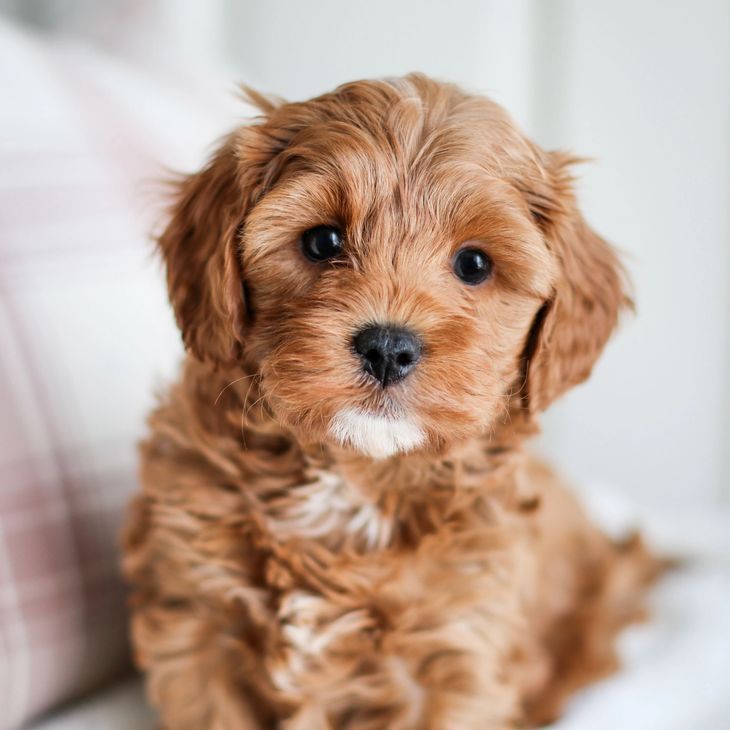How To Introduce A New Puppy To An Older Dog
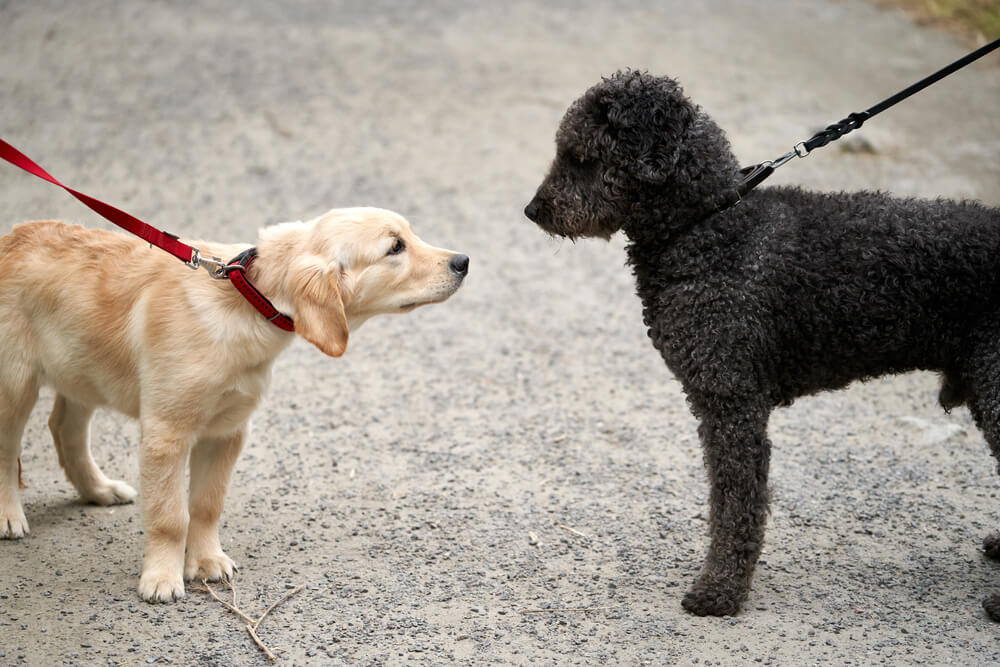
Table of Contents
Listen To The Article
Introduction to How To Introduce
A New Puppy To An Older Dog
Getting a new puppy to live with an older dog is a tricky balancing act the older dog will be territorial, and the puppy will be exuberant and a bit clumsy.
The newest member of your family is a cute, fluffy ball of energy.
The problem is, the older dog that’s been in your family for years is not excited to share his space.
As you try to integrate the two, the older dog becomes more and more aggressive towards the puppy.
This is a common problem when introducing a new puppy into an existing household with an older dog.
The main issue is that the older dog sees the puppy as competition for attention and treats.
Dogs typically get along well with other dogs, but introducing an older dog to a puppy is a slightly trickier process, and it’s important to pay attention to the signs of stress in the older dog and in the puppy while they’re learning to live with one another.
First, understand that what you’re seeing is normal.
Older dogs often don’t like feeling like they have to compete for their food, toys, and treats with a puppy, and puppies can be extra rambunctious, which can agitate older dogs.
We have put together this blog to teach you how to introduce a new dog to an existing dog.

Before Introducing
Before you bring your new puppy home put away your older dog’s favorite chews and toys, to avoid territorial behavior.
Create spaces in your home where both dogs can get away from the other.
Purchase separate food dishes to prevent possessive aggression.
Ensure both dogs are up-to-date on their vaccinations.
Your older dog considers your house his house.
In order to prevent territorial aggression, find a neutral area to introduce the older dog to the new puppy.
Put your older dog on a leash while another person holds the puppy on a leash.
However, let them sniff and meet each other there’s no need to hold them tightly to your side.
You don’t want them to feel restricted.
The initial introduction should be relatively quick.
Stay calm throughout.
Your dog can sense the tension within you and is more likely to be stressed if you are.
Your dog will take your emotions into consideration throughout the introduction.
He looks to you to understand how he should react to a situation.
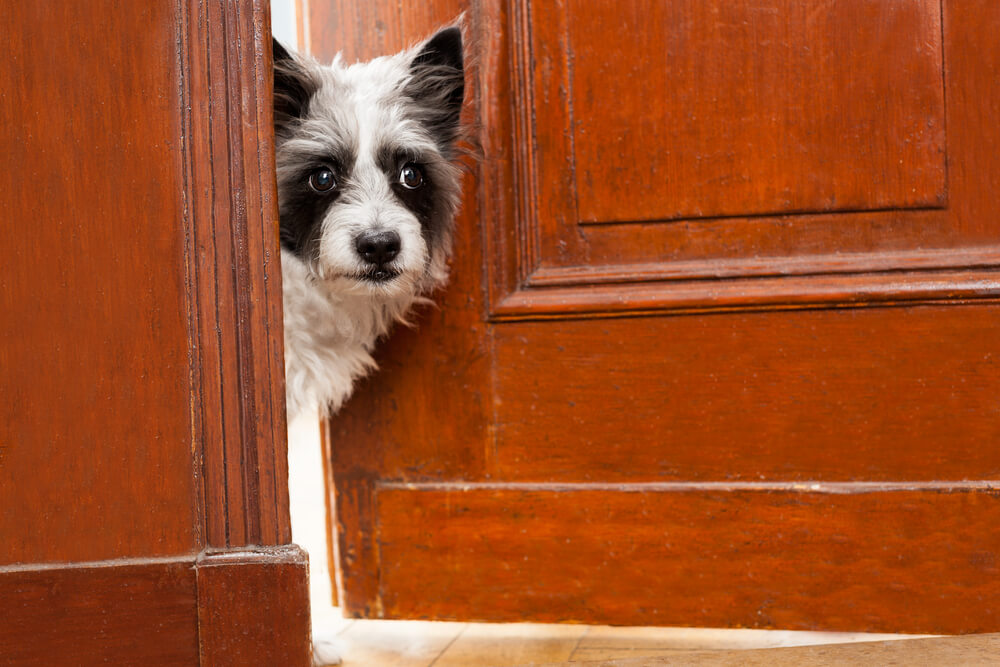
Entering Your Home
For the first week or two, the older dog and puppy should be continuously monitored to ensure the dogs are comfortable with one another. Follow your older dog’s regular routine.
Begin establishing a routine for the puppy as well, to provide the necessary structure.
Watching your dogs’ body language for the first several weeks will help you gauge how they’re reacting to one another.
If the puppy is young, he may not understand the body language of the adult dog very well.
For instance, the puppy will likely want to engage in playtime even if the older dog is showing signs of discomfort.
What body language should you watch out for?
Raised fur on the back of the neck/back
Prolonged stares
Growling
Snarling
Display of teeth
Hunched back
What Not to Do
Do not allow the older dog to bully the puppy.
Do not, ever, allow the two dogs to fight.
Do not hold the puppy in your arms during the introduction.
Do not force them to be together.
Do not allow them to share a crate. Purchase a new crate for the puppy so both dogs have their own space.
What to Do Instead
Do allow them to get used to one another at their own pace.
Do introduce them in a neutral area.
Do allow them to escape to their crate if desired.
Do feed them in separate areas.
Do spend quality time with them separately.
Do allow them to interact positively if desired.
Do allow them to play with supervision.
Do supervise them at all times for the first several weeks.
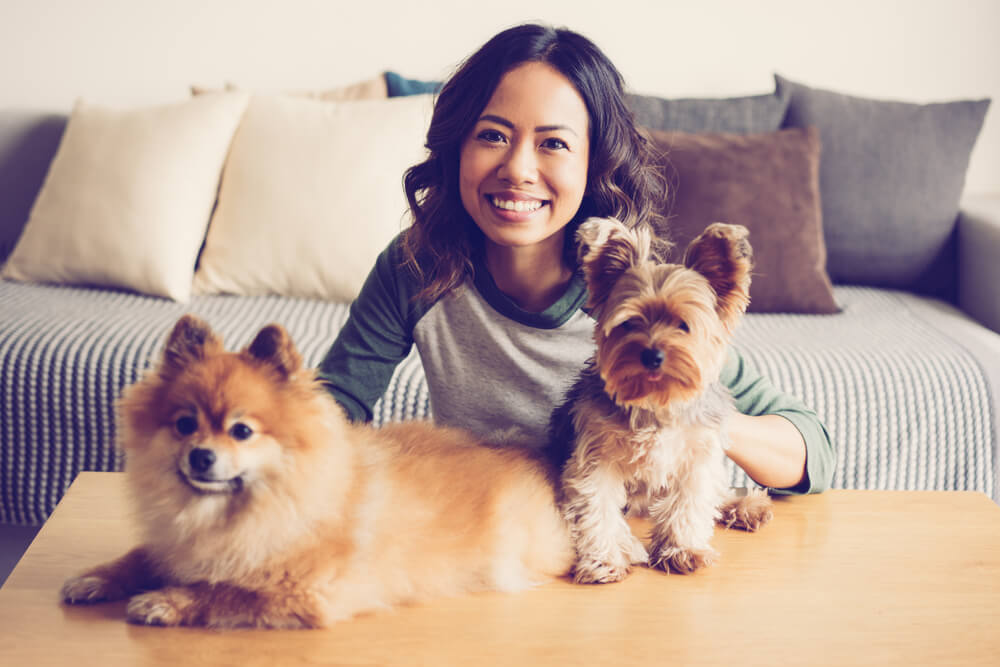
Introducing A Puppy To An Older Dog
Give some thought to choosing a new dog who can be compatible with your present dog.
In our experience, conflict is least likely to occur between a male dog and a female dog.
A male with a male is the next best combination, a female with a female is the combination most likely to result in conflict.
When you choose a new dog, consider your present dog’s needs.
For example, try not to bring a very active young dog into a home with an older dog who already has health problems such as osteoarthritis.
If you do get a puppy or young dog, be prepared to “protect” the older dog from her.
You will have to spend plenty of time with the new dog and offer distractions to keep her from harassing the older dog.
Try to introduce the new dog at a time when you will have at least a weekend to be home.
You will want to observe and supervise closely at first.
It is best not to leave two newly introduced dogs alone before they have become acquainted and the new dog is at least somewhat comfortable in his new home.
Introduce the dogs in a neutral area rather than your own home or yard.
Both dogs should be on leashes for control, but try to allow them a little room to maneuver.
They may be calmer if they don’t feel completely restrained.
You will need one adult for each dog.
Have the person walking the new dog approach from the side and “catch up” to you and your dog as you walk.
Pick an area where you can walk together with a little distance between the dogs.
As they walk they can look at and sniff each other, but there will be other things to catch their interest as well.
Try to do this in an area without a lot of other people and dogs so that neither dog is over-stimulated.
The walk should end at your home.
If you have a yard and the weather permits, it may help to bring the dogs into the yard before going into the house.
At first, allow them on a long leash until you notice relaxed and “wiggly” body postures and interest from both dogs.
Once they appear relaxed and interested in a friendly manner, you can allow the leashes to drop so that they can interact.
When you first enter the house don’t let the dogs jostle each other in an entryway.
Try to get both into the house quickly so that one doesn’t react to the other’s entrance later.
Make sure there is an environment of plenty.
There should be more than one water bowl and more than one comfortable place to lie down.
There should be plenty of toys, especially of kinds your dog likes, so that there’s no reason for the dogs to have a conflict over access to them.
If your dog has a history of guarding his toys, they should be removed for the initial introduction period, which may take a few weeks.
This all needs to be arranged before you pick up the new dog.
At first, feed your dog the way you always have done and feed the new dog in a different room.
Your dog should not have to worry about feeding time, leading to problems feeding the dogs.
The new dog has no expectations of your home, so he shouldn’t be upset by whatever feeding spot you choose.
A very food-motivated dog will eat well from the start, but some dogs may need a person with them for the first day or two.
Wait until you feel confident that the dogs are comfortable with each other before offering valuable treats such as real bones, rawhide, pigs’ ears, etc., and supervise when you do.
If your dog is reactive with these, you may have to separate the dogs before giving them these items.
If your dog never gets these kinds of treats because he is aggressive over them, that should be the rule for the new dog too.
Your dog may try to keep the new dog away from things that are very important to him.
He may block the new dog from approaching you, from resting places like dog beds and furniture, or from rooms like the family room or the bedroom.
If the new dog is very anxious, he may do the same, trying to keep your dog away from him in certain locations, or even sticking with a family member and trying to keep your dog away.
Do not scold or punish the dogs if this happens.
Instead, get up and move if it looks like you will be the center of contention, and distract either dog if he seems to be invading a place where the other is resting.
Keep both dogs away from areas where food is being prepared or eaten at first.
If either dog is anxious about the food, there could be a conflict.
Don’t change your dog’s sleeping arrangements.
If he sleeps in your bedroom, you’ll have to decide whether the new dog will sleep there too.
That may be the only way to avoid a lot of distress on the part of the new dog.
He may have to be crated, though, at least in the beginning, to avoid problems during the night when you would be unprepared to intervene.
Very few dogs coexist without disagreements.
A stare, a lifted lip, or a growl is a normal dog signal that he’s uncomfortable with something another dog is doing.
Often the recipient of these signals will stop and move away this is appropriate.
There is likely to be some of this at first.
As the dogs become more comfortable with each other they should do less of this, but punishing them can have very negative results.
It can turn uncertainty into fear and aversion and result in an ongoing conflict between the dogs.
Supervise and distract as needed to make sure serious conflicts don’t arise but don’t punish this sort of behavior.
Examples of serious conflicts include staring that cannot be interrupted, hard stiff muscles and posturing that lasts more than a few seconds, or full-contact fights.
Please also monitor for excessive “bullying” behavior from one dog towards another.
If you notice that one dog is repeatedly avoiding eye contact and interactions, rolling over onto his back, or attempting to escape from the other dog.
This can be an indication that one dog is uncomfortable and fearful and that the other dog is not appropriately responding to his avoidance cues.
Don’t leave the dogs together when they are alone in the house until you’re reasonably sure that they are comfortable with each other.
The new dog especially may be very anxious when left with your dog at first.
If they can be crated, fine; if not, perhaps they can be gated apart.
It may be difficult to separate them behind closed doors.
Leave them for very short periods at first to make sure no problems arise when you’re gone.
Supervise play between the dogs at first.
Dogs who are not well acquainted may do some rough play at first and this can result in growling or snapping.
Be prepared to distract and redirect the dogs to another activity if play becomes too intense.
As the dogs become more familiar with each other they usually learn to modulate their play.
Any situation that raises the level of excitement in your environment should be avoided at first.
The more time the dogs have to become acquainted before they have to deal with visitors or other disturbances the better.
If you have children, do not let them or their friends interact with the two dogs without adult supervision.
Remember that the new dog will have no idea at first how to signal that he needs to eliminate.
Treat him as though you were beginning to housetrain him until he understands your routine.
Try not to let him have accidents in the house; sometimes one dog will mark over the elimination of the other leading to house soiling problems.
As time goes on you’ll learn more about the new dog’s personality, but be careful at first of overwhelming him.
People should not hug or kiss him, and there should be no rough play.
Especially at first, avoid doing things to either dog that require restraint, such as grooming or bathing, in front of the other.
A dog may attack the restrained dog if he is anxious about him.
When using treats during daily activities, be sure there are plenty for each dog.
You might start out with less attractive treats so as to avoid aggression over them.
Be patient and keep in mind most dogs get along well once they are accustomed to each other.
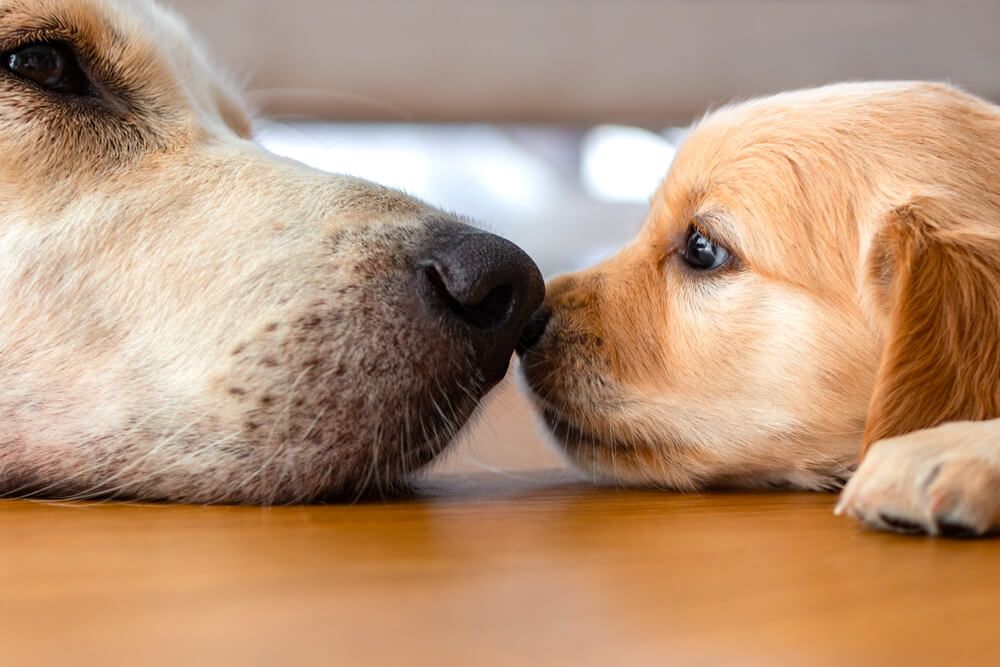
How Long Will It Take?
it may take around 4 to 8 weeks for resident dogs to get used to the change associated with a new addition, but it can take up to 6 to 9 months for both dogs to bond and feel comfortable around each other.
With puppies and old dogs, we need to consider the age gap factor so your older dog may only start feeling more comfortable once your pup has become calmer due to maturing and his obedience training and social skills improving.
Think along with the terms of a grandma being overwhelmed by a toddler who is pulling at her skirt and screaming, versus an older child who wants to bake with her and read a book.
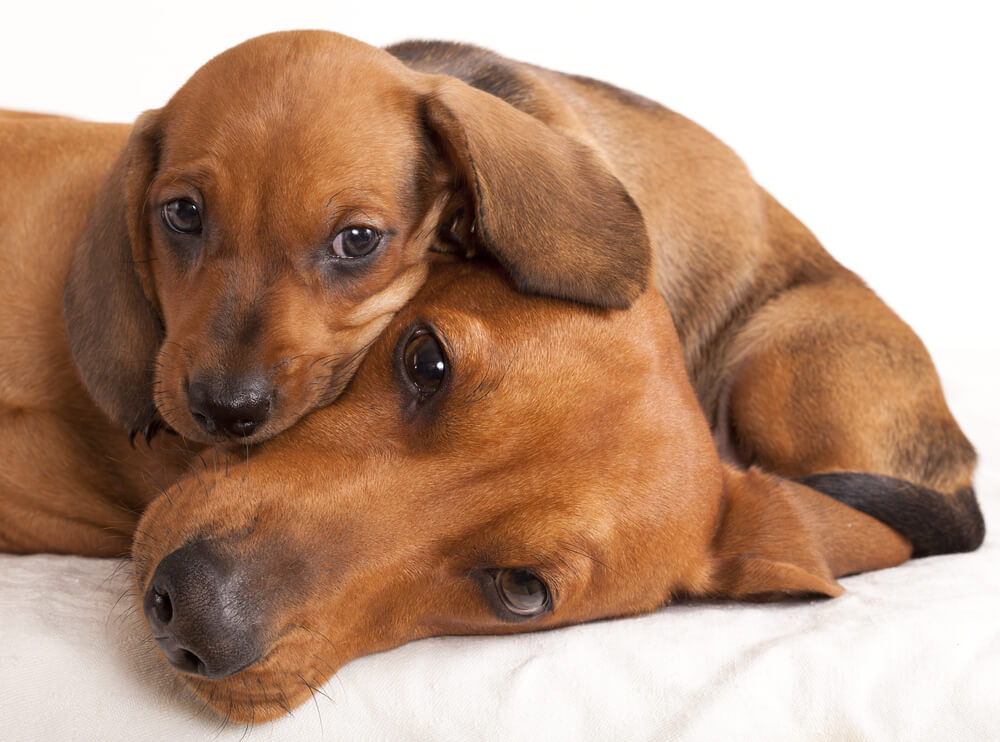
How Old Is Too Old?
It goes without saying that with very old dogs (like large dogs over 12 and small dogs over 14) or dogs who are blind or deaf or both, it may be better to wait to get a new puppy.
Very old dogs may struggle to get away from a boisterous puppy and they may get very stressed.
Even good stress (eustress) can be a lot for an older dog to endure.
An older dog that is blind or deaf will struggle as he has no senses to rely on to detect when the puppy is around.
He or she will therefore have a hard time understanding when the puppy is running up to him, trying to bite him, and pawing at him.
This can cause considerable stress at a time when our older dogs should be kept as calm as possible and enjoying retirement.
It is a known fact that the two most demanding life stages of dogs are the first few years of their lives and they are the last few as senior dogs.
Dealing with both at the same time can be overwhelming.
Although tempting to get a puppy with an older dog, it may be just easier opening our hearts and homes to a puppy once our older dog has passed to a better life.

Problems And Troubleshooting Behavior
Most dogs quickly work out their social ranking and decide how to interact in a positive way.
It’s best for the puppy to be segregated in a room alone with a baby gate barrier when you are not there to directly supervise.
As much as you may want your dogs to hit it off right away, be sure to take things slow and stay in control of the situation.
Common mistakes include be nervous or anxious and letting the dogs meet on their own too early.
Do your best to keep every meeting between the dogs happy and let them get used to each other’s scents gradually.
It’s important to start things off right in order to establish a comfortable doggie home for everyone.
As seen, there are several strategies that can help pave the path towards smoother introductions, but it’s best to be prepared for the worst-case scenario.
It’s important to realize that not always things may work out well as planned.
An older dog may struggle with a boisterous or puppy or maybe your older dog was really never sociable in the first place.
If at any time you notice worrisome signs or your older dog is getting more stressed rather than less, consult with a professional.
It is best to nip problems in the bud rather than waiting for things to get worse and reach a breaking point where things may no longer be manageable.
A few sessions of behavior modification and some management may sometimes ameliorate the situation.
If things seem too challenging though, at least you tried all your options before having to re-home the puppy.
Although heartbreaking, this is a better option than having two dogs live in a world of tension and misery.


